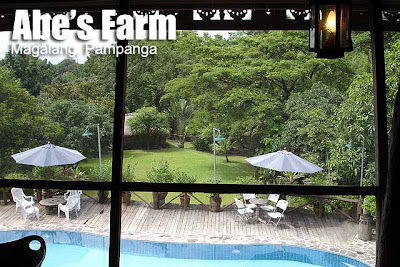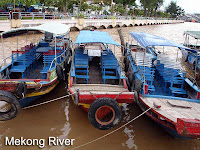 This afternoon, we visited three waterfalls in Rizal. This was a spur of the moment trip which my Pinoy Mountaineer partner Gideon Lasco had been egging me on to do. We tagged along my brod, Bikoy Villanueva and another hiking buddy, Sai Sicad. Their proximity to Metro Manila make them perfect for a day trip. In fact, we did it in one afternoon. We were going to visit Daranak Falls in Tanay, Rizal. But on the way, we saw the sign to Hinulugang Taktak in Antipolo City and decided to stop over.
This afternoon, we visited three waterfalls in Rizal. This was a spur of the moment trip which my Pinoy Mountaineer partner Gideon Lasco had been egging me on to do. We tagged along my brod, Bikoy Villanueva and another hiking buddy, Sai Sicad. Their proximity to Metro Manila make them perfect for a day trip. In fact, we did it in one afternoon. We were going to visit Daranak Falls in Tanay, Rizal. But on the way, we saw the sign to Hinulugang Taktak in Antipolo City and decided to stop over. Since it had just rained (or was still raining in some parts) the flow of the water was quite strong. It was a great sight. Hinulugang Taktak was a favorite excursion place for pilgrims who visited the Nuestra Senora de Paz y Buen Viaje in Antipolo during the olden days, thus the folk song "Tayo na sa Antipolo." Sadly, there was a lot of garbage and the falls itself distinctly smelled like detergent. I could just imagine how many women were washing clothes upstream because indeed, it was detergent since soap suds were forming at the bottom of the falls flowing to the stream.
Since it had just rained (or was still raining in some parts) the flow of the water was quite strong. It was a great sight. Hinulugang Taktak was a favorite excursion place for pilgrims who visited the Nuestra Senora de Paz y Buen Viaje in Antipolo during the olden days, thus the folk song "Tayo na sa Antipolo." Sadly, there was a lot of garbage and the falls itself distinctly smelled like detergent. I could just imagine how many women were washing clothes upstream because indeed, it was detergent since soap suds were forming at the bottom of the falls flowing to the stream. From Antipolo, it was a quick drive down to Tanay. Daranak Falls was the first waterfall I remember visiting. It was a grade 6 camping trip. There are actually two falls, the main one and a smaller, but equally forceful one beside it, which both emptied into a single pool.
From Antipolo, it was a quick drive down to Tanay. Daranak Falls was the first waterfall I remember visiting. It was a grade 6 camping trip. There are actually two falls, the main one and a smaller, but equally forceful one beside it, which both emptied into a single pool. I didn't know that just a few meters away from Daranak was another waterfall, the Batlag Falls. It was fantastic!
I didn't know that just a few meters away from Daranak was another waterfall, the Batlag Falls. It was fantastic! It was a five-minute hike up to get there. There were two major falls actually which cascaded down into their own their own catch basins. The smaller one on the left looked like a bridal veil. While the larger one on the right was wider. The water from both pools cascaded further down over rocks and roots of trees, flowing into the stream which flowed to Daranak.
It was a five-minute hike up to get there. There were two major falls actually which cascaded down into their own their own catch basins. The smaller one on the left looked like a bridal veil. While the larger one on the right was wider. The water from both pools cascaded further down over rocks and roots of trees, flowing into the stream which flowed to Daranak.I think this was the best of the three falls. It was a good thing we visited on a weekday since we had all the falls all to ourselves. More photos in Multiply.














































